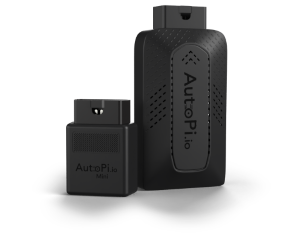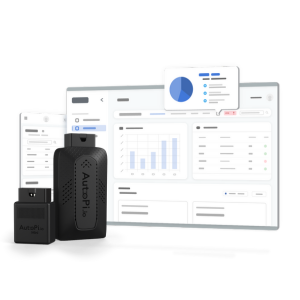Welcome to our guide on automotive software! This guide delves into the heart of modern vehicle technology, where software increasingly plays a vital role. In 2025, software is projected to make up 30% of a car's value, marking its critical impact in driving innovation and safety in the automotive world.
It's truly amazing to see how automotive software is revolutionizing the way we think about mobility. We're at a point where AI and software aren't just add-ons; they're driving the industry forward at an incredible pace.
Vehicle data isn't just numbers and stats anymore. It's become a goldmine for companies looking to stand out in this digitally-transformed world. That's pushing a lot of them to embrace digital solutions that are not just smart but also reliable.
And at the center of all this? Automotive software. It's quickly become a key piece in the puzzle of modern transportation. With its ability to handle heaps of data on the fly, it's giving businesses the power to make smarter decisions and really amp up their operations.
In this guide, we're diving into how automotive software is changing the game and what that means for the future of getting from point A to point B. Let's get started!
What is Automotive Software?
Automotive software is a game-changer in the realm of vehicle technology, designed specifically to enhance the functionalities of cars and other vehicles. This specialized software is at the forefront of transforming the mobility industry. It plays a crucial role in areas like autonomous driving, smart cities and connected car, enabling businesses to access and leverage real-time data on vehicle performance. This data is instrumental in making informed decisions that drive operations forward and maintain a competitive edge.
What sets automotive software apart is its ability to be integrated seamlessly with various hardware components. This integration provides an all-in-one solution, offering advanced data-tracking capabilities and significantly improved vehicle performance. It's not just about collecting data; it's about capturing and processing vast amounts of it in real time, which is made possible by connecting vehicles to an array of sensors and telematics devices.
In addition to its impressive data processing capabilities, automotive software plays a vital role in enhancing the driving experience for consumers. It offers features that make journeys more comfortable and convenient, such as GPS navigation, entertainment systems, and cutting-edge driver assistance technologies. As the market rapidly evolves, automotive software is becoming increasingly essential for companies aiming to meet growing consumer demands and stay ahead in the industry.

Unlock Your Car’s Full Potential with AutoPi CAN FD Pro
We all want to keep tabs on our car’s health, but getting clear, reliable info can be tricky. That’s where the AutoPi CAN FD Pro comes in. It’s incredibly useful to have all that information easily accessible.
One of the best things about the AutoPi device is its global coverage. With 4G/LTE built in, it’ll keep you connected no matter where you are in the world. And the dual CAN-FD interfaces? That means 8x more bandwidth and speed than the older systems, so everything works faster and more smoothly. You’ll get data you can actually use, when you need it.
And don’t worry about losing important data. AutoPi CAN FD Pro has built-in power-safe functionality, so even if the power goes out, your info is safe. It’s flexible too—whether you're using it for your personal car or a whole fleet of vehicles, you can extend it with external sensors and really take things to the next level. It’s simple, yet powerful, and helps make sure your car’s always running at its best.
How Does Automotive Software Work?
Delving into how automotive software works, it's a wonder of modern engineering that depends on the flawless integration of software and vehicle hardware (e.g., AutoPi CM4). In brief, automotive software functions by communicating with the vehicle's various systems, interpreting data from a collection of sensors and components.
This process involves several key steps:
-
Data Collection: Automotive software begins by gathering data from multiple sources within the vehicle. This includes sensors that monitor everything from engine performance and fuel efficiency to driving patterns and external environmental conditions.
-
Data Processing and Analysis: Once the data is collected, the software processes it, analyzing the information to understand the vehicle's status and performance. This analysis can range from simple diagnostics to complex predictive maintenance algorithms.
-
Action and Response: Based on the analysis, the software can make real-time adjustments or provide recommendations. For example, in the case of driver-assistance systems, it may automatically adjust the vehicle's speed or trajectory. In infotainment systems, it might suggest navigation routes or entertainment options.
-
Communication with External Systems: Many automotive software systems also communicate with external networks, like GPS satellites for navigation, or cloud servers for updating maps and software. This connectivity is crucial for features like real-time traffic updates or remote diagnostics.
-
User Interface and Interaction: Finally, the software presents information to the driver through various interfaces, such as digital dashboards, heads-up displays, or smartphone apps. These interfaces are designed to be intuitive, allowing drivers to interact with the system easily and safely.
Through these steps, automotive software ensures vehicles are not only more efficient and safer but also more attuned to the needs and preferences of the driver, marking a significant leap in the evolution of vehicle technology.
Automotive Diagnostic Software in Action
Exploring the real-world application of automotive diagnostics software, we find a perfect illustration in AutoPi, a cutting-edge and versatile tool in this field. This example showcases the practicality and sophistication of these systems, demonstrating their crucial role in modern vehicle maintenance and problem-solving.
The AutoPi IoT Infrastructure functions as a bridge between the car's electronic systems and the user, offering a comprehensive insight into the vehicle's performance and health. Here's how it works in a real-life scenario:
Real-Life Example of Automotive Diagnostic Software:
Imagine a car experiencing intermittent engine issues, which are often difficult to diagnose manually. The AutoPi device comes into play by connecting to the vehicle's On-Board Diagnostics (OBD-II) port, a standard interface in most modern cars. Once connected, AutoPi starts collecting data from various sensors and systems within the vehicle.
In addition to tools like AutoPi, vehicle inspection software plays a crucial role in helping mechanics and owners perform comprehensive assessments of a vehicle’s condition. Such software automates the inspection process, making it easier to identify issues, track vehicle performance, and ensure regular maintenance is carried out efficiently.
The software analyzes this data to pinpoint the root cause of the issue. For example, it might detect irregularities in the engine temperature or identify a specific error code that indicates a malfunctioning component. This level of detail is crucial for mechanics and vehicle owners, providing a clear direction for repairs and maintenance.
|
[x] Connection to Vehicle
|
[z] Data Analysis
|
[y] Problem Identification
|
[a] Additional Features
|
|---|---|---|---|
| Connects to the car's OBD-II port for system access. | Analyzes sensor data for vehicle health. | Identifies issues, sends alerts for problems like low battery. | Offers remote start, geo-fencing, and trip logs. |
Moreover, the AutoPi device isn't limited to problem detection. It also offers features like real-time monitoring of vehicle parameters, remote control capabilities, and custom alerts. For instance, if a vehicle's battery voltage drops below a certain level, AutoPi can send a notification to the owner, helping to prevent breakdowns (documentation).
In addition to diagnostic functions, AutoPi can enhance the driving experience by integrating with other car systems. It can provide features like remote start, geo-fencing, and trip logging, making it a versatile tool for both diagnostics and enhanced vehicle functionality.
The Future of Automotive Software Solutions
The future solutions of automotive software paints an exiting and transformative picture for the automotive industry. As we look ahead, several key trends and innovations stand out, signaling a new era of vehicle technology.
-
Integration with Emerging Technologies: Automotive software solutions are increasingly incorporating cutting-edge technologies like artificial intelligence (AI) and the Internet of Things (IoT). This integration is expected to further enhance vehicle automation, predictive maintenance, and personalized user experiences.
-
Enhanced Connectivity and Communication: The future will see a greater emphasis on connected vehicles. Automotive software will enable cars to communicate with each other (V2V - vehicle-to-vehicle) and with infrastructure (V2I - vehicle-to-infrastructure), leading to improved safety and traffic management.
-
Advancements in Electric Vehicle (EV) Software: As the world moves towards sustainable transportation, software solutions for EVs will become more sophisticated. This includes better battery management systems, more efficient energy consumption algorithms, and enhanced charging network integrations.
-
Autonomous Driving Technologies: The pursuit of fully autonomous vehicles continues to be a significant driver of innovation in automotive software. Future software solutions will focus on improving sensor fusion, decision-making algorithms, and safety protocols to make self-driving cars a reality.
-
User-Centric Design and Customization: Automotive software will become more user-focused, offering personalized settings and features. From customizable driving modes to intuitive infotainment systems, the emphasis will be on enhancing the driver and passenger experience.
-
Increased Security Measures: As vehicles become more connected and reliant on software, cybersecurity will be paramount. Future automotive software solutions will incorporate advanced security protocols to protect against hacking and unauthorized access.
-
Data-Driven Insights and Services: With vehicles generating vast amounts of data, automotive software will leverage this for actionable insights. This could range from real-time traffic updates to predictive maintenance alerts, offering a more informed and seamless driving experience.
The future of automotive software solutions is not just about technological advancements; it's about creating a more connected, efficient, and enjoyable driving experience. These developments will redefine our relationship with vehicles, making them more than just a means of transportation but an integrated part of our digital lives.

Timeline of Automotive Software
The evolution of automotive software has been a journey of innovation and transformation. Here's a timeline highlighting the key milestones:
-
1980s: The Beginning of Automotive Software: The use of electronic control units (ECUs) in vehicles began in the 1980s. These early systems primarily managed engine functions and basic vehicle operations.
-
1990s: Expansion and Integration: In the 1990s, automotive software started to integrate more deeply with various vehicle systems, leading to improvements in fuel efficiency, emissions control, and safety features like airbags.
-
Early 2000s:Rise of Infotainment Systems: The early 2000s saw the introduction of infotainment systems, merging entertainment and information delivery within vehicles. This period marked the beginning of software-driven user experiences in cars.
-
Mid to Late 2000s: Advanced Driver-Assistance Systems (ADAS): The development of ADAS began in this era, with features like electronic stability control, anti-lock braking systems, and later, features like adaptive cruise control and lane departure warnings.
-
2010s: Connectivity and Mobility Services: The 2010s witnessed a surge in connected car technologies. Automotive software started to include features like GPS navigation, real-time traffic updates, remote diagnostics, and smartphone integration.
-
Late 2010s to Present: Electrification and Autonomous Technologies: The focus shifted towards electric vehicles (EVs) and autonomous driving technologies. Software now manages complex tasks like battery management in EVs and sensor integration for self-driving functionalities.
Today and Beyond: Presently, automotive software is a critical component in the industry, driving advancements in IoT integration, cybersecurity, user customization, and AI-based predictive analytics. It's shaping a future where vehicles are not just transport modes but interconnected, smart devices part of the larger digital ecosystem.

![A Simple Guide to Automotive Software [2025]](https://d1ihv1nrlgx8nr.cloudfront.net/media/blog/Automotive_Software_What_is_it_and_its_Benefits.jpeg)





